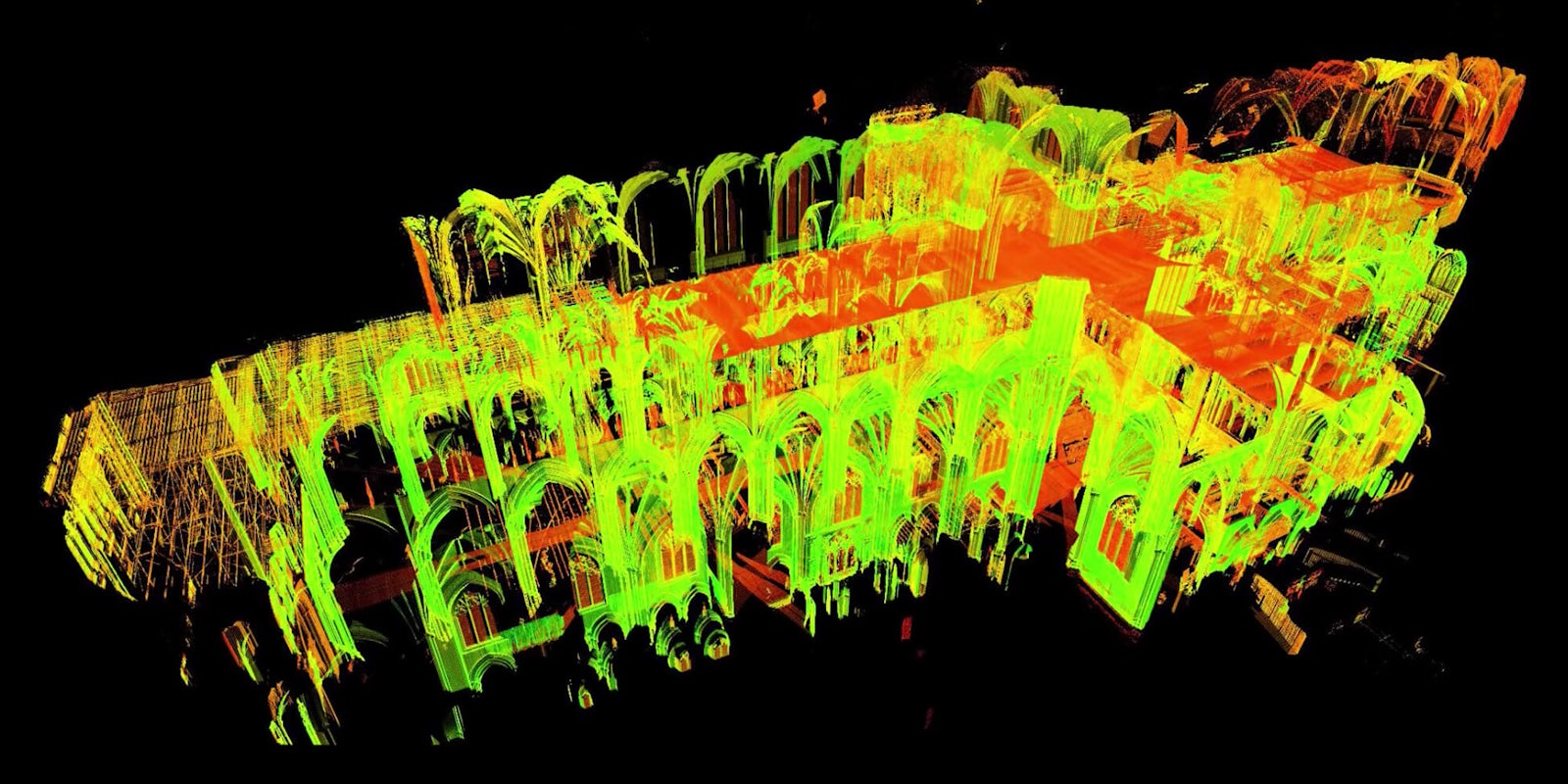Digital scans of the Notre Dame cathedral in Paris could offer some hope after the iconic structure was ravaged by flames on Monday.
While countless photographs and video have been taken of Notre Dame over the years, many worried the building’s numerous intricacies could be lost to history. Thank goodness for Andrew Tallon, a renowned architectural historian and former professor at Vassar College. Before he passed away last November from brain cancer, Tallon spent years using lasers to map out one of France’s most awe-inspiring sights.
The work began in 2010 when Tallon combined 3D laser scanning technology with high-resolution panoramic photography to discover and record the architectural secrets of the medieval church. In an interview posted to YouTube by National Geographic in 2015, Tallon outlined both his reasoning for the unprecedented undertaking as well as the techniques used to conquer such a feat.
“When you’re working on medieval buildings, it’s difficult to have the impression you can say anything new. They’ve been looked at and written about for ages,” Tallon said during the interview. “So I’ve been using more sophisticated technology these days to try to get new answers from the buildings.”
In total, Tallon was able to collect more than one billion data points taken from over 50 locations throughout Notre Dame.
Dr. Paul Blaer, a senior lecturer at Columbia University’s Department of Computer Science who aided Tallon in his efforts, described to the Atlantic his initial reactions to the fire having known of his friend’s deep connection to the historical landmark.
“One thought was that I was kind of relieved that he didn’t actually have to see this happen,” Blaer said. “But on the other hand, he knew it so well and had so much information about how it’s constructed, he would have been so helpful in terms of rebuilding it.”
While Tallon can no longer provide his knowledge to those tasked with restoring Notre Dame, his digital scans will prove more invaluable than he could have ever imagined.


